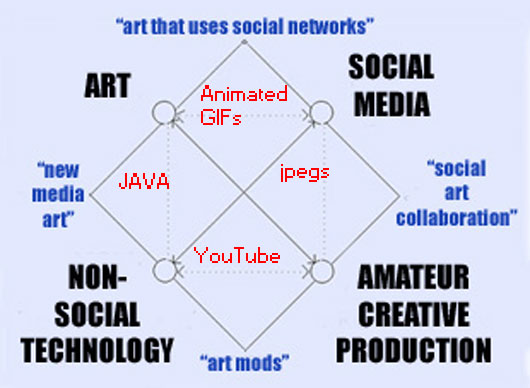The discussion on Rhizome about bad social media art criticism has continued and has now reached the "dudes bludgeoning other dudes with theory" stage:
Greimas' approach is still a kind of post-Saussurean (or post-Peircean) structuralism, used by Jameson and others to transition into something that might be considered proto-post-structuralism...
Nothing wrong with any of that, per se, except it avoids talking about specific examples. In the course of the conversation I re-read and linked to Paddy Johnson's notes comparing two "net aesthetics" panels, one in '06 and one in '08, and the ensuing comments. Here actual artists are talking about actual work being done on the net. So refreshing. But in a way nostalgic--the summer of '08, when that discussion took place, was pre-crash and has a feeling of hopefulness and possibility that I miss.

